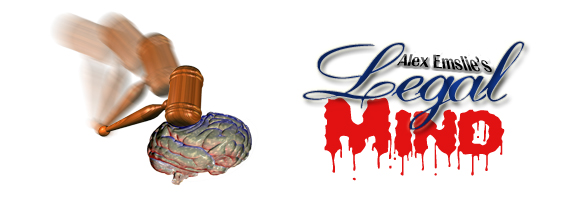The Implications of Johannes Mehserle’s Release
By Alex Emslie
The Guardsman
The wounds of a community shaken to its core by a single gun shot, fired into the back of an unarmed, face-down BART passenger on Jan. 1, 2009, will likely be ripped open again with Johannes Mehserle’s release from prison on June 13.
Groups enraged by Mehserle’s lenient conviction and sentence have scheduled a protest in response to his release for 3 p.m. on June 12 at the Fruitvale BART station.
As the shock waves from that deadly and deafening explosion reverberate through Oscar Grant’s family, the Bay Area and California’s legal system, it seems incredibly relevant to rehash society’s priorities as they were defined by Mehserle’s 11-month sentence.
From a legal perspective, there is a fair amount of irony in that statement. Our criminal justice system operates under the necessary condition of impartiality. Criminal trials are not supposed to define social values. Judges and juries are right to neglect the reaction of a community when rendering verdicts and sentences.
But the high profile of Mehserle’s murder trial and the intense, justified anger of a community long brutalized by law enforcement ensured that the outcome would send a message.
The community’s message
Meanwhile, a movement calling for “justice for Oscar Grant” was sending its own messages to the court.
The streets of Oakland erupted into riots six days after Grant’s killing. A crowd of hundreds smashed windows and burned cars. Police arrested 105 protesters. The Alameda County District Attorney officially charged Mehserle with murder a week later.
Oakland saw a second round of riots when Mehserle was convicted of involuntary manslaughter and the wrongful use of a gun. The charge was the lightest offense Mehserle faced. More than 80 were arrested after storming through downtown Oakland, smashing store-front windows, looting and lighting several small fires.
Police arrested over 100 protesters Nov. 5, 2010, the night of Mehserle’s sentence to involuntary manslaughter’s minimum term of 2 years, with credit for time served. Police response to the somewhat smaller protest was much better coordinated than the previous two, and there was minimal property damage.
The same organizers of the peaceful demonstrations that preceded those riots scheduled the June 12 response, and if past protests are a good indicator, downtown Oakland could see chaos again.
The court’s message
Los Angeles Superior Court Judge Robert Perry’s refusal to enhance Mehserle’s prison term from four to 10 years despite the jury’s finding that he wrongfully used his service weapon in the commission of the felony made a mockery of the jury’s authority.
California’s penal code requires tacking on additional years to sentences for felonies involving the use of firearms. The law makes no exception for law enforcement officers.
The message behind Mehserle’s sentence is that police are held to a far different standard than ordinary citizens when it comes to shooting people, and despite their position of authority and extensive firearms training, that standard is lower.
Mehserle’s attorney argued the gun enhancement “should not logically apply to a police officer who mistakenly shoots a resisting suspect” because they are legally armed in order to enforce public safety. Perry agreed and said he should never have allowed the jury to apply the enhancement to Mehserle, even though they voted to do so unanimously.
That argument would make sense if Mehserle had used his firearm as honorably as his attorney described. Instead, he used it to commit a felony and kill an innocent man, which is why the enhancement should apply. Police should be a little more afraid to draw and fire their service weapons, knowing there are real consequences for abusing the authority they are granted by the public.
A pawn in their game
It’s not accurate to call Mehserle a murderer, and it’s hard to believe that his horrific mistake on New Years Day, 2009, was directly motivated by a hatred of black people (about as hard to believe as his defense attorney’s argument, later parroted by Judge Perry, that he meant to draw his Tazer, but shot Grant as the result of a “muscle memory accident”).
Black people are four times as likely to experience police use of force than white people, according to the U.S. Department of Justice Statistics. Mehserle didn’t create that inequality in the justice system, but he perpetuated it.
Mehserle was a pawn of a racist criminal justice system that predictably treats people of color with greater brutality. His mistake that robbed Grant’s family of a son and father should have carried a punishment more severe than, say, a second petty theft conviction, which carries a jail term of up to one year in California. But the system protects its own.
It’s not an easy job to weigh a dead man’s life against the culpability and intent of his killer. In this case, Judge Perry ignored the intent of Mehserle’s jury and squandered the chance to move our criminal justice system incrementally away from a totalitarian model and toward one with greater equality and safety for citizens.
He handed down a slap on the wrist when he had the discretion to value the life of an innocent man so much more. Grant’s supporters have the right to be furious.


Comments are closed.